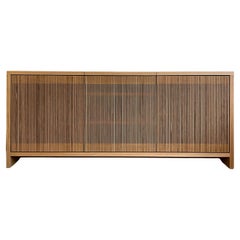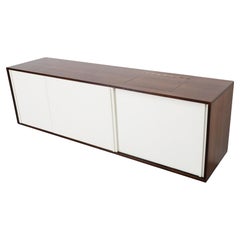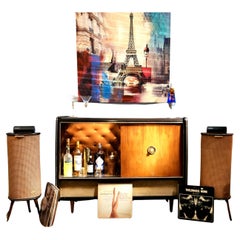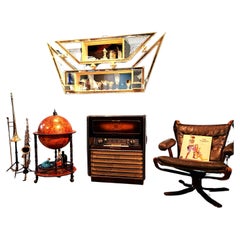Record Player Credenza
21st Century and Contemporary American Minimalist Credenzas
Oak
Mid-20th Century Dutch Mid-Century Modern Credenzas
Glass, Wood, Wenge
Recent Sales
Mid-20th Century American Mid-Century Modern Credenzas
Paper
Mid-20th Century American Mid-Century Modern Credenzas
Paper
Mid-20th Century American Mid-Century Modern Credenzas
Paper
Mid-20th Century American Mid-Century Modern Credenzas
Paper
Mid-20th Century American Mid-Century Modern Credenzas
Paper
Mid-20th Century American Mid-Century Modern Credenzas
Paper
Mid-20th Century American Mid-Century Modern Credenzas
Paper
Mid-20th Century American Mid-Century Modern Credenzas
Paper
Mid-20th Century American Mid-Century Modern Credenzas
Paper
Mid-20th Century American Mid-Century Modern Credenzas
Paper
Vintage 1950s American Mid-Century Modern Credenzas
Fabric, Softwood
Mid-20th Century American Mid-Century Modern Credenzas
Aluminum
Mid-20th Century Danish Scandinavian Modern Credenzas
Rosewood
Vintage 1960s American Mid-Century Modern Credenzas
Walnut
Vintage 1950s American Mid-Century Modern Credenzas
Beech
Early 20th Century Unknown Victorian Decorative Boxes
Mahogany
Vintage 1960s American Mid-Century Modern Sideboards
Walnut
People Also Browsed
21st Century and Contemporary French Art Deco Table Lamps
Hide, Wood, Parchment Paper
2010s Italian Mid-Century Modern Chandeliers and Pendants
Chrome
Vintage 1930s German Bauhaus Chandeliers and Pendants
Brass
21st Century and Contemporary Bauhaus Armchairs
Metal
21st Century and Contemporary Italian Art Deco Wall Lights and Sconces
Brass
2010s German Mid-Century Modern Chandeliers and Pendants
Brass
Mid-20th Century Swedish Scandinavian Modern Chandeliers and Pendants
Textile, Wood
21st Century and Contemporary Books
Paper
Vintage 1960s Italian Mid-Century Modern Chandeliers and Pendants
Murano Glass
Mid-20th Century Swiss Mid-Century Modern Planters and Jardinieres
Cement, Metal
Vintage 1960s Italian Mid-Century Modern Dining Room Tables
Brass, Iron
Vintage 1970s Italian Mid-Century Modern Dining Room Chairs
Steel
21st Century and Contemporary Dutch Modern Chandeliers and Pendants
Brass
20th Century Persian Heriz Serapi Persian Rugs
Wool
Vintage 1930s Swedish Scandinavian Modern Commodes and Chests of Drawers
Teak
1990s Spanish Post-Modern Glass
Glass, Murano Glass
Record Player Credenza For Sale on 1stDibs
How Much is a Record Player Credenza?
A Close Look at Mid-century Modern Furniture
Organically shaped, clean-lined and elegantly simple are three terms that well describe vintage mid-century modern furniture. The style, which emerged primarily in the years following World War II, is characterized by pieces that were conceived and made in an energetic, optimistic spirit by creators who believed that good design was an essential part of good living.
ORIGINS OF MID-CENTURY MODERN FURNITURE DESIGN
- Emerged during the mid-20th century
- Informed by European modernism, Bauhaus, International style, Scandinavian modernism and Frank Lloyd Wright’s architecture
- A heyday of innovation in postwar America
- Experimentation with new ideas, new materials and new forms flourished in Scandinavia, Italy, the former Czechoslovakia and elsewhere in Europe
CHARACTERISTICS OF MID-CENTURY MODERN FURNITURE DESIGN
- Simplicity, organic forms, clean lines
- A blend of neutral and bold Pop art colors
- Use of natural and man-made materials — alluring woods such as teak, rosewood and oak; steel, fiberglass and molded plywood
- Light-filled spaces with colorful upholstery
- Glass walls and an emphasis on the outdoors
- Promotion of functionality
MID-CENTURY MODERN FURNITURE DESIGNERS TO KNOW
- Charles and Ray Eames
- Eero Saarinen
- Milo Baughman
- Florence Knoll
- Harry Bertoia
- Isamu Noguchi
- George Nelson
- Danish modernists Hans Wegner and Arne Jacobsen, whose emphasis on natural materials and craftsmanship influenced American designers and vice versa
ICONIC MID-CENTURY MODERN FURNITURE DESIGNS
- Eames lounge chair
- Nelson daybed
- Florence Knoll sofa
- Egg chair
- Womb chair
- Noguchi coffee table
- Barcelona chair
VINTAGE MID-CENTURY MODERN FURNITURE ON 1STDIBS
The mid-century modern era saw leagues of postwar American architects and designers animated by new ideas and new technology. The lean, functionalist International-style architecture of Le Corbusier and Bauhaus eminences Ludwig Mies van der Rohe and Walter Gropius had been promoted in the United States during the 1930s by Philip Johnson and others. New building techniques, such as “post-and-beam” construction, allowed the International-style schemes to be realized on a small scale in open-plan houses with long walls of glass.
Materials developed for wartime use became available for domestic goods and were incorporated into mid-century modern furniture designs. Charles and Ray Eames and Eero Saarinen, who had experimented extensively with molded plywood, eagerly embraced fiberglass for pieces such as the La Chaise and the Womb chair, respectively.
Architect, writer and designer George Nelson created with his team shades for the Bubble lamp using a new translucent polymer skin and, as design director at Herman Miller, recruited the Eameses, Alexander Girard and others for projects at the legendary Michigan furniture manufacturer.
Harry Bertoia and Isamu Noguchi devised chairs and tables built of wire mesh and wire struts. Materials were repurposed too: The Danish-born designer Jens Risom created a line of chairs using surplus parachute straps for webbed seats and backrests.
The Risom lounge chair was among the first pieces of furniture commissioned and produced by celebrated manufacturer Knoll, a chief influencer in the rise of modern design in the United States, thanks to the work of Florence Knoll, the pioneering architect and designer who made the firm a leader in its field. The seating that Knoll created for office spaces — as well as pieces designed by Florence initially for commercial clients — soon became desirable for the home.
As the demand for casual, uncluttered furnishings grew, more mid-century furniture designers caught the spirit.
Classically oriented creators such as Edward Wormley, house designer for Dunbar Inc., offered such pieces as the sinuous Listen to Me chaise; the British expatriate T.H. Robsjohn-Gibbings switched gears, creating items such as the tiered, biomorphic Mesa table. There were Young Turks such as Paul McCobb, who designed holistic groups of sleek, blond wood furniture, and Milo Baughman, who espoused a West Coast aesthetic in minimalist teak dining tables and lushly upholstered chairs and sofas with angular steel frames.
Generations turn over, and mid-century modern remains arguably the most popular style going. As the collection of vintage mid-century modern chairs, dressers, coffee tables and other furniture for the living room, dining room, bedroom and elsewhere on 1stDibs demonstrates, this period saw one of the most delightful and dramatic flowerings of creativity in design history.
Finding the Right Credenzas for You
Antique and vintage credenzas can add an understated touch of grace to your home. These long and sophisticated cabinet-style pieces of furniture can serve a variety of purposes, and they look great too.
In Italy, the credenza was originally a small side table used in religious services. Appropriately, credere in Italian means “to believe.” Credenzas were a place to not only set the food ready for meals, they were also a place to test and taste prepared food for poison before a dish was served to a member of the ruling class. Later, credenza was used to describe a type of versatile narrow side table, typically used for serving food in the home. In form, a credenza has much in common with a sideboard — in fact, the terms credenza and sideboard are used almost interchangeably today.
Credenzas usually have short legs or no legs at all, and can feature drawers and cabinets. And all kinds of iterations of the credenza have seen the light of day over the years, from ornately carved walnut credenzas originating in 16th-century Tuscany to the wealth of Art Deco credenzas — with their polished surfaces and geometric patterns — to the array of innovative modernist interpretations that American furniture maker Milo Baughman created for Directional and Thayer Coggin.
The credenza’s blend of style and functionality led to its widespread use in the 20th century. Mid-century modern credenzas are particularly popular — take a look at Danish furniture designer Arne Vodder’s classic Model 29, for instance, with its reversible sliding doors and elegant drawer pulls. Hans Wegner, another Danish modernist, produced strikingly minimalist credenzas in the 1950s and ’60s, as did influential American designer Florence Knoll. Designers continue to explore new and exciting ways to update this long-loved furnishing.
Owing to its versatility and familiar low-profile form, the credenza remains popular in contemporary homes. Unlike many larger case pieces, credenzas can be placed under windows and in irregularly shaped rooms, such as foyers and entryways. This renders it a useful storage solution. In living rooms, for example, a credenza can be a sleek media console topped with plants and the rare art monographs you’ve been planning to show off. In homes with open floor plans, a credenza can help define multiple living spaces, making it ideal for loft apartments.
Browse a variety of antique and vintage credenzas for sale on 1stDibs to find the perfect fit for your home today.
- 1stDibs ExpertApril 5, 2022No, you cannot play any record on any record player. There are a variety of sizes of vinyl records and a range of speeds at which records are intended to be played. It’s important to make sure you use the proper player for the records you have in order to ensure the best sound and to keep your records in good condition.
- 1stDibs ExpertMay 5, 2023The main parts of a record player are the plinth, the revolving platter, the tone arm, the stylus and the cartridge. The plinth is the base of the record player, while the revolving platter is the round platform in the middle where you put the record. When you're ready to play a record, you lift the tone arm and place the needle or stylus against the vinyl. Then, the cartridge inside of the tone arm produces electrical signals as the stylus moves over the record's grooves. These impulses amplify to play music. On 1stDibs, shop a variety of record players.
- 1stDibs ExpertMay 5, 2023Yes, people had record players in the 1930s. In fact, record players began to become more common during the decade and continued to grow in popularity throughout the 1940s, 50s and 60s. Thomas Edison made the first phonograph record player in 1877. Shop a variety of record players on 1stDibs.
- 1stDibs ExpertFebruary 13, 2023Old-time record players were called gramophones or phonographs. Thomas Edison debuted his phonograph in 1877. The device was the result of Edison’s developing improvements to the telegraph and the telephone. He worked out a way to record sound on cylinders that were coated in tin foil (he decided that his invention would “undoubtedly be liberally devoted to music”). On 1stDibs, find vintage record players.
- 1stDibs ExpertMay 5, 2023In the 1950s, most people just called record players record players. The technical name for record players from this period is a phonograph. Until the 1940s, many people referred to record players as gramophones. On 1stDibs, find a variety of record players.
- 1stDibs ExpertMay 5, 2023How much an antique record player cabinet is worth depends on a variety of factors. The age, materials, maker and condition all impact value. If the record player remains inside the cabinet, and whether or not it is operational will also affect the price you can expect to receive for it. Having the cabinet evaluated by a certified appraiser is a simple way to find out how much your piece is worth. On 1stDibs, shop a collection of record players.



